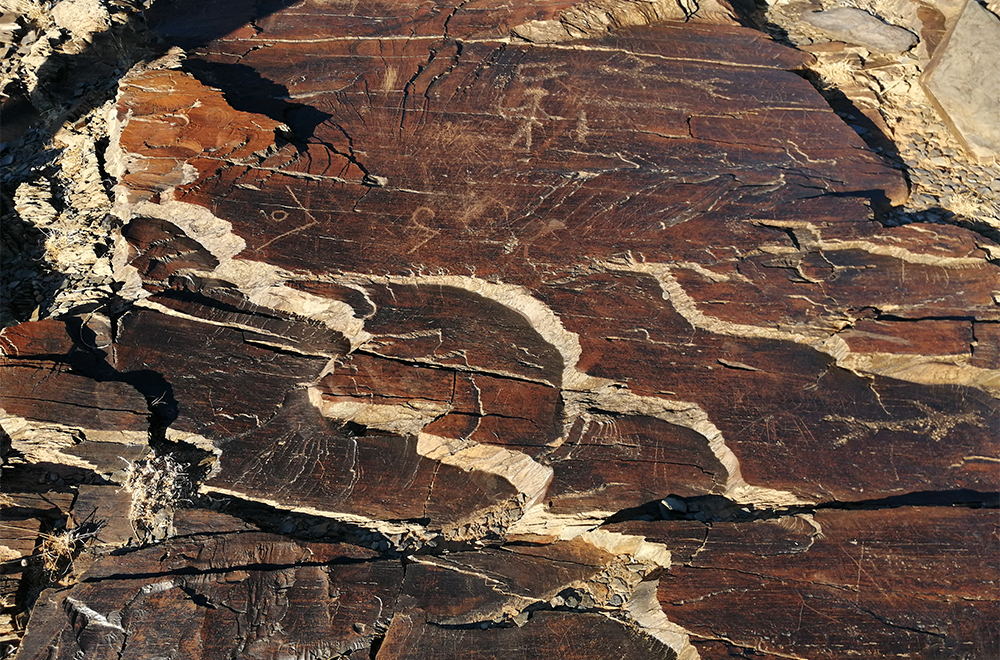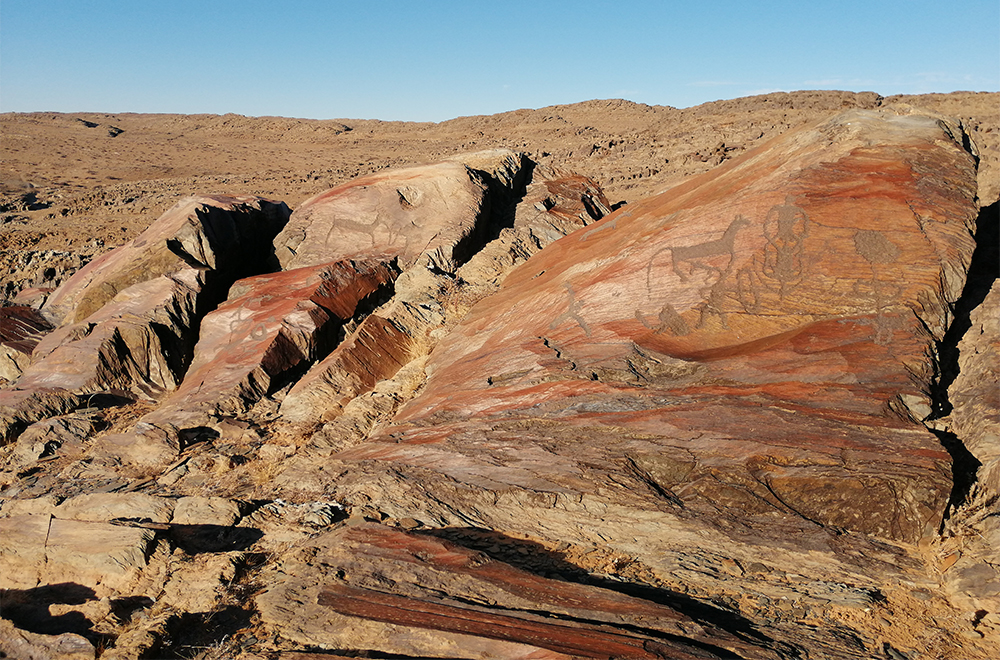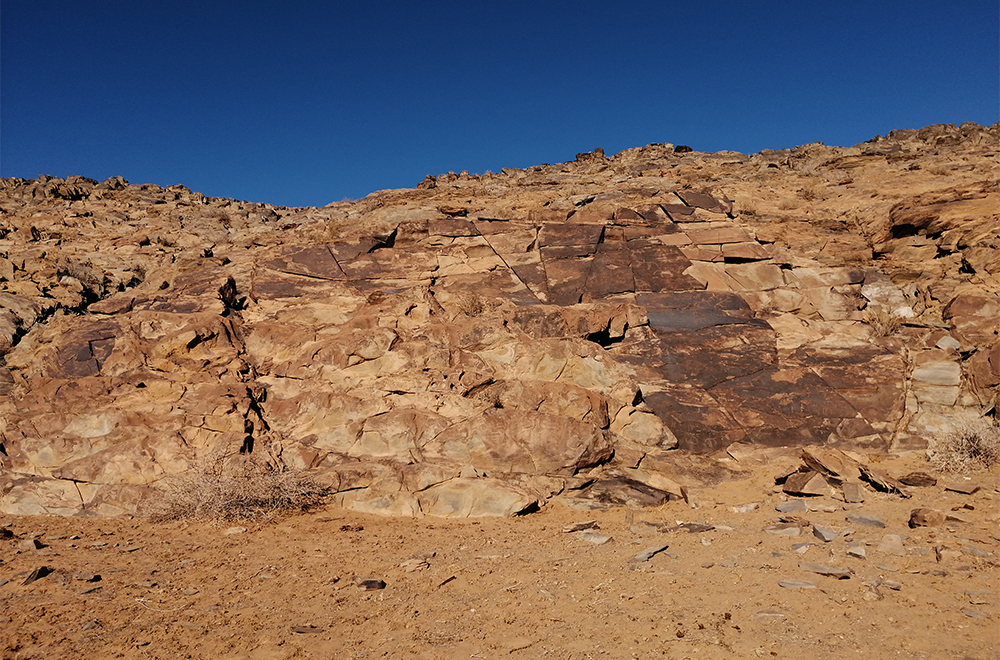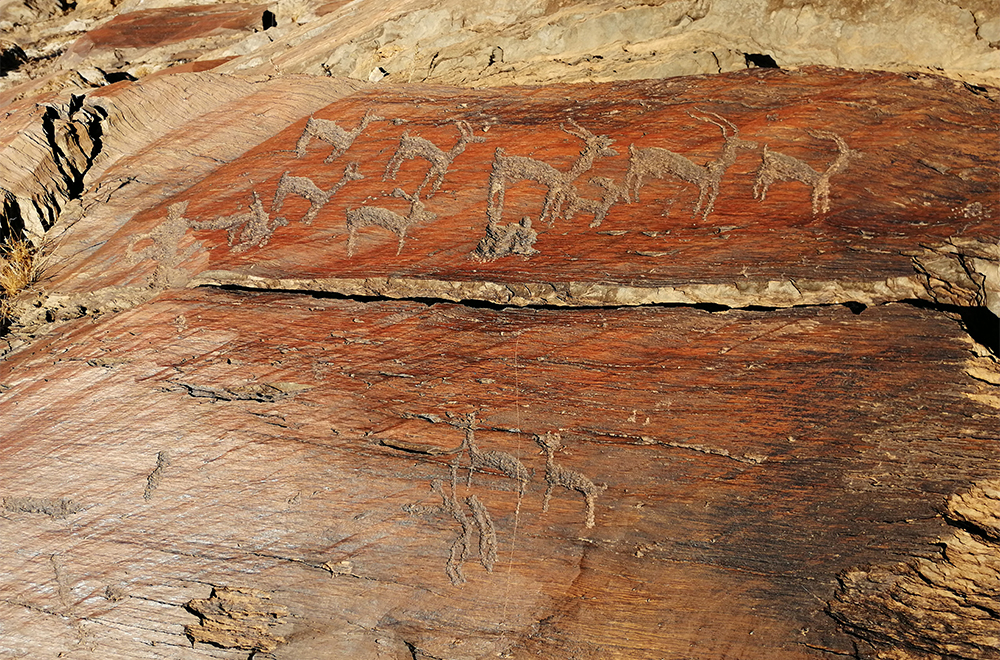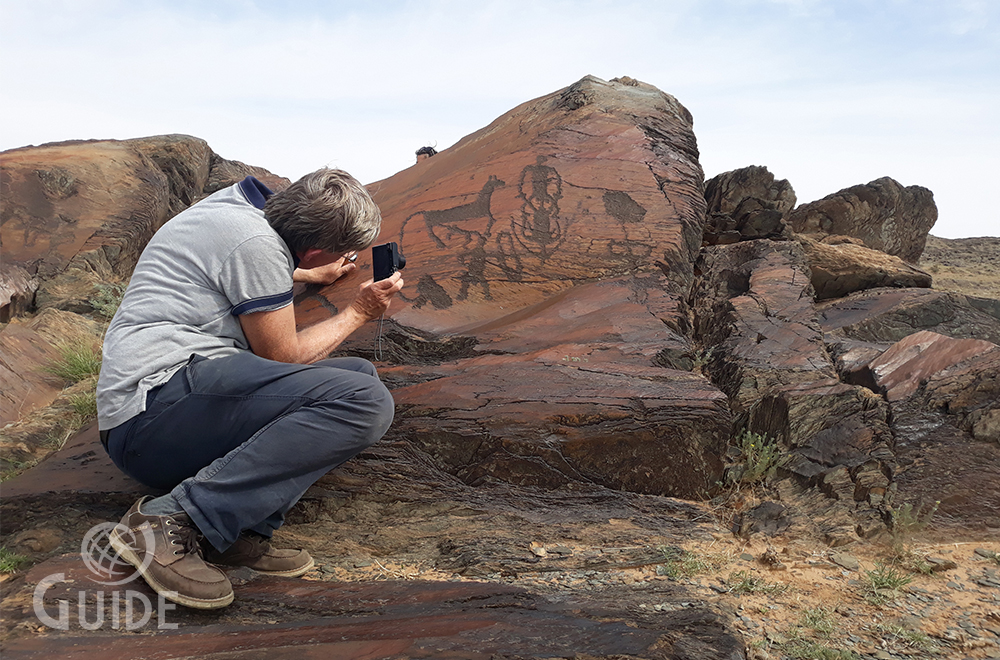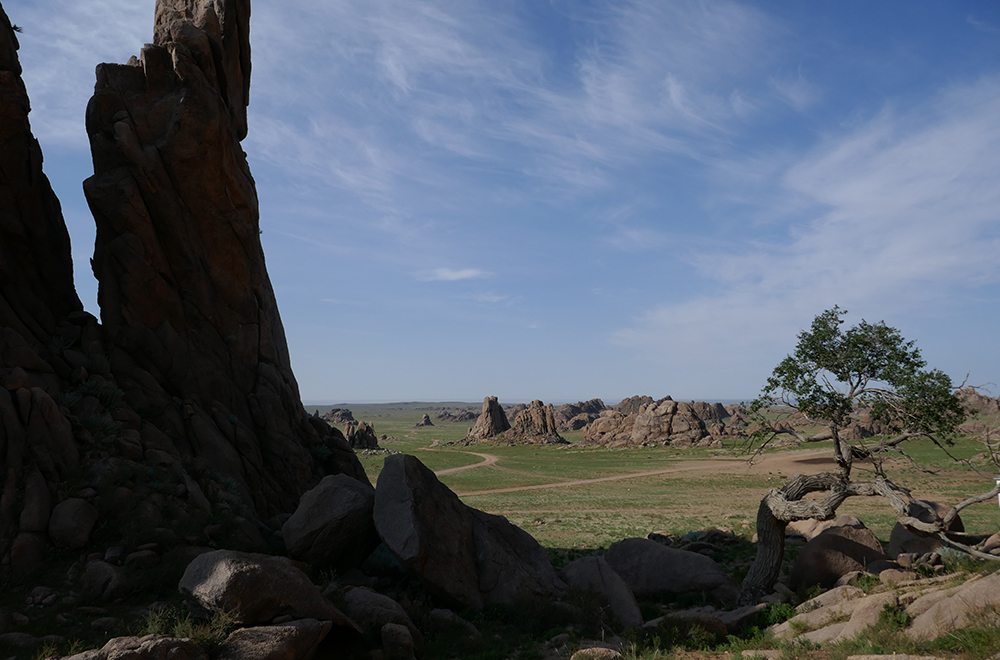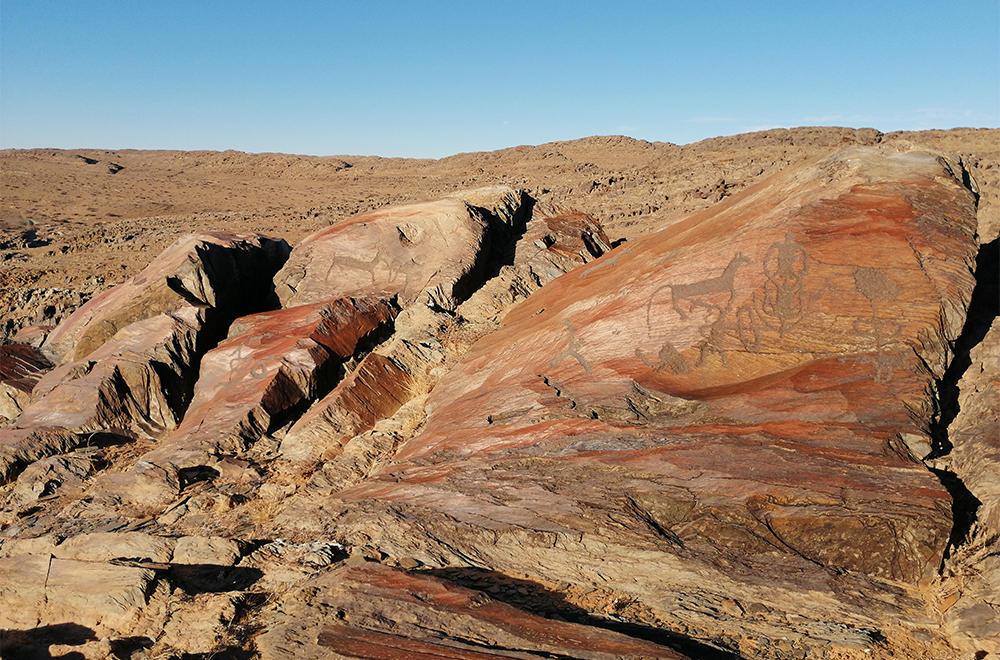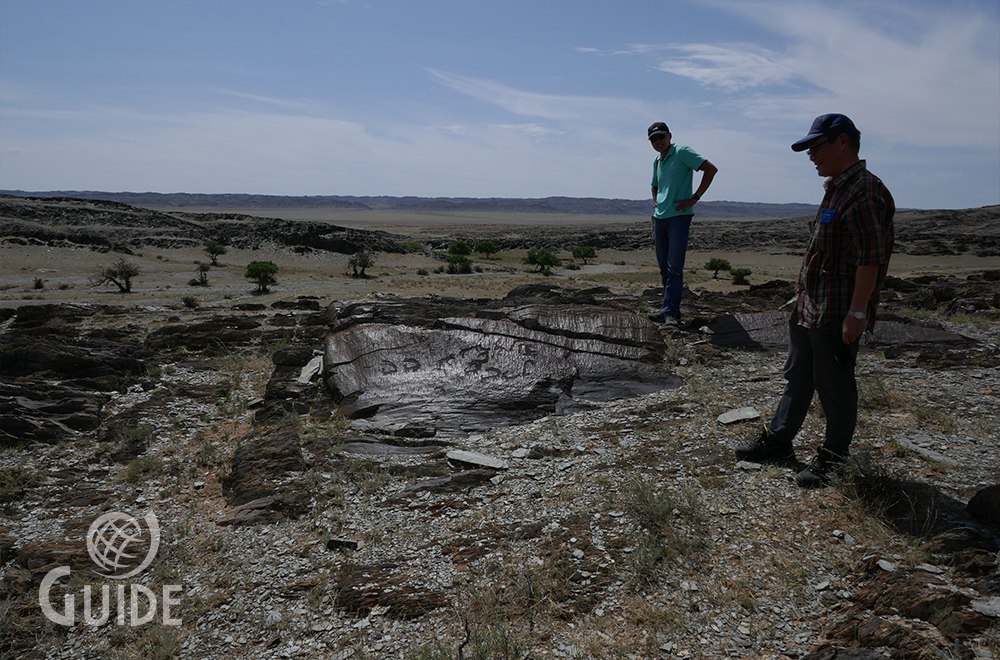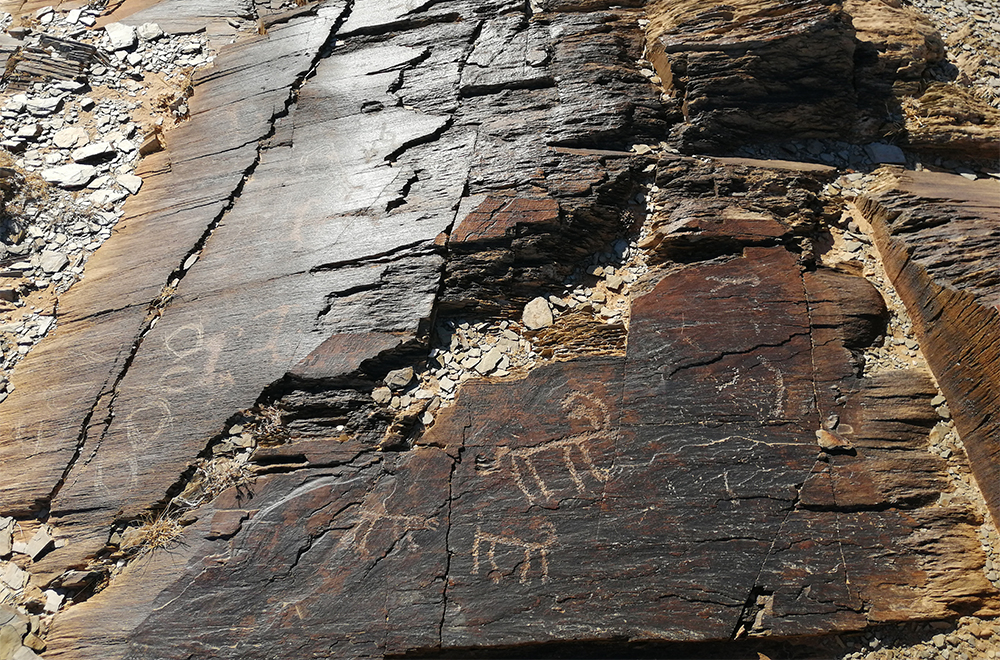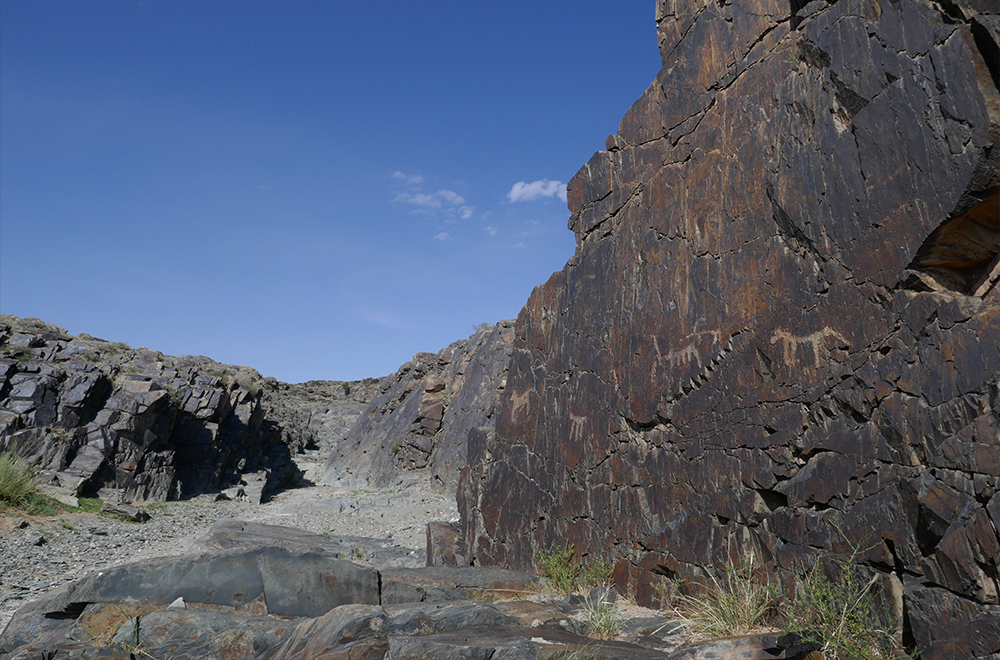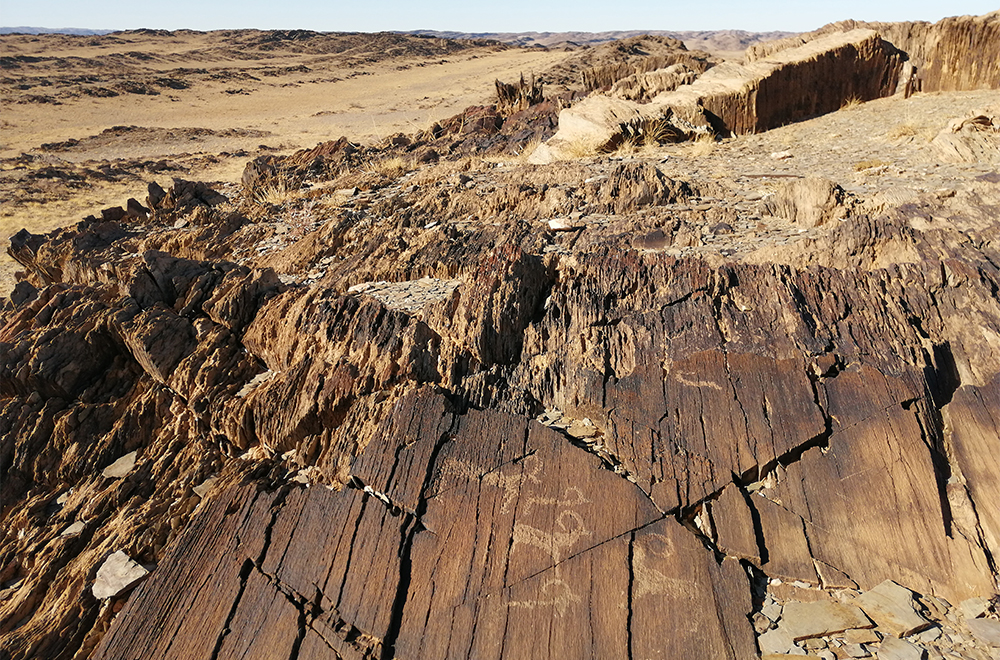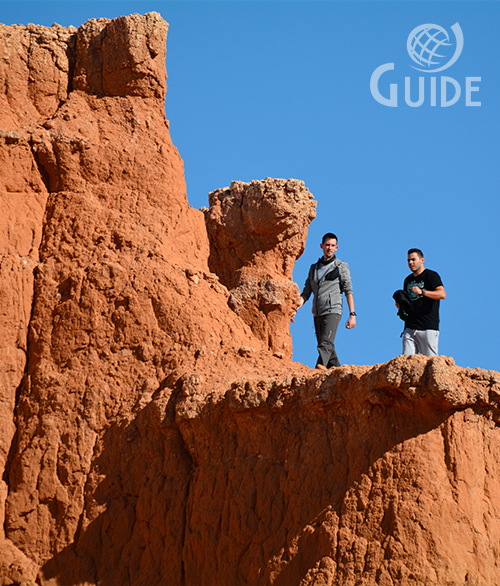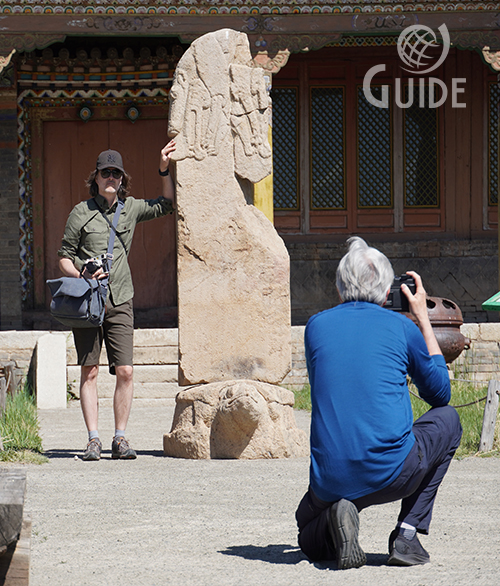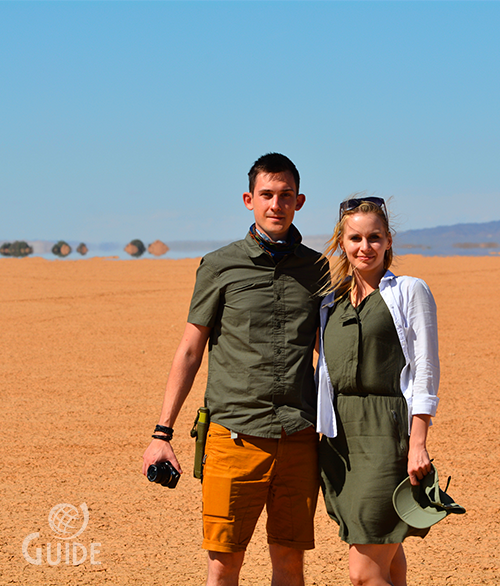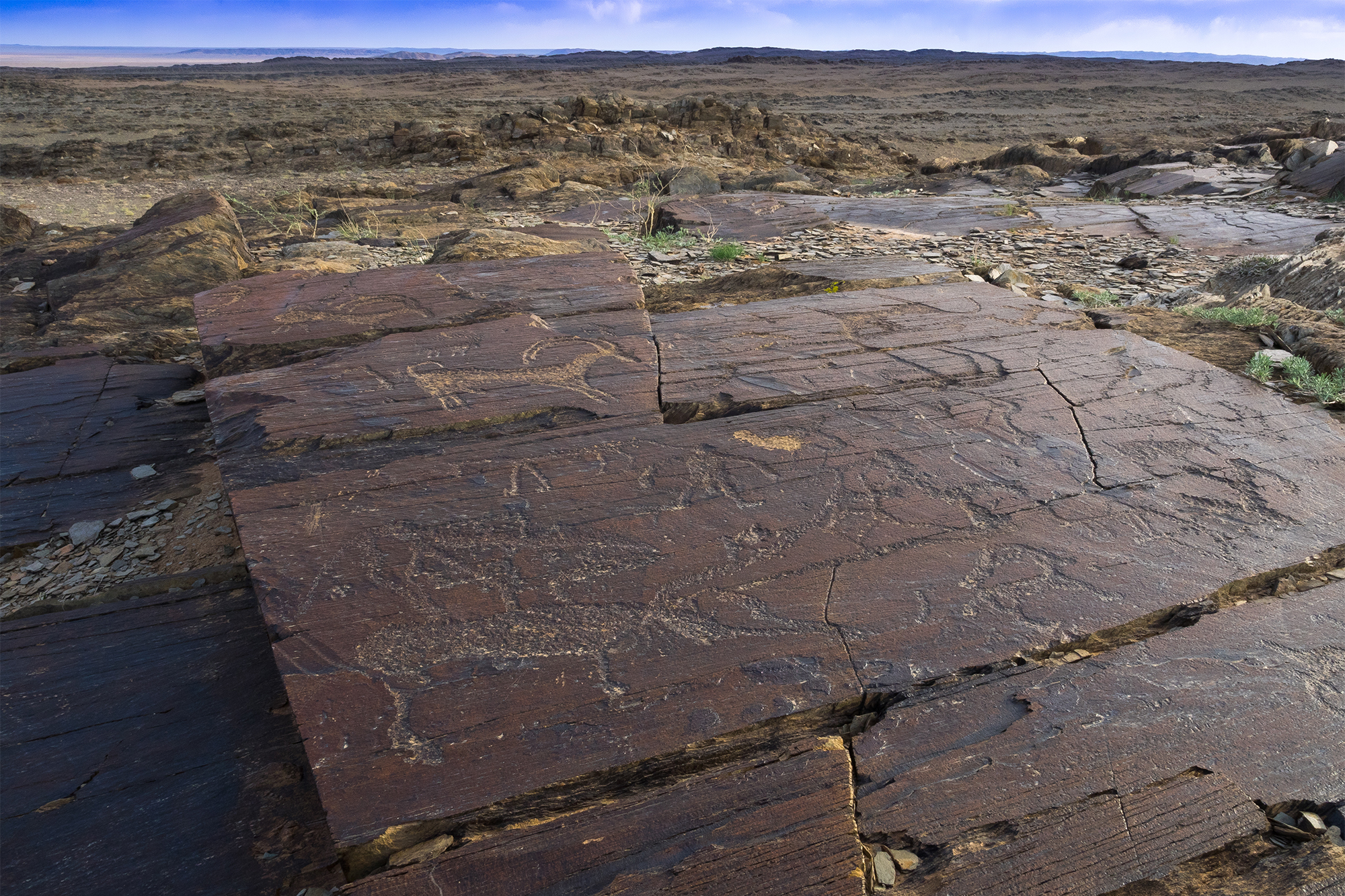
DEL MOUNTAIN
Located in the Ulziit Sum area of Dundgovi Province, Del Mountain stretches 17 km from west to east and 8 km from north to south and consists of small mane-like rocks (Del-literally means horse mane). Del Mountain itself is a whole rock art painting gallery. Since 1986, scientists have conducted various research on this site. Rock paintings, runic inscriptions, hanzi letters, old Uyghur, Tibetan inscriptions, ants graves /long oblong, the right, and left sides are curved inwards/, square graves, ancient grave mounds, deer stones, zel stones, rock burials, temple ruins, and Paleolithic remains. Among them, one of the major relics in the Gobi region of Mongolia, the rock painting is a wonderful monument that preserves early human and nomads' lifestyles and spiritual development. The wonder of Del Mountain is not only a historical and cultural monument but also its unique natural formation. Rare animals such as argali (wild sheep), ibex, and black-tailed deers inhabit there. Moreover, various medicinal plants grow in this unique environment formed by shale stones.
Researchers have found that those 3,000 more rock paintings in Del Mountain were painted in five different periods which are several thousand years apart from each other, such as the Neolithic, Bronze Age, Early Iron Age, Hunnu, and Turkic Empire periods. The reasons for repeatedly painting rock arts in the surrounding of Del Mountain are related to its advantage of natural harmony for human habitation, an abundance of wildlife, and conditions for performing any act of worship.
The Del Mountain petroglyphs can be divided into several parts. Thematically, it can be classified as human life-related themes, tribal conflict, war, hunting, domesticated animals, and transportation methods. There are eye-catching paintings such as giant figures, figures of 20-30 people dancing, houses with windows, four-wheeled camel carts, and bullock carts. Khas stamps (swastika) are also carved here and there, proving that Mongolian nomads have been using the Khas symbol (swastika) since ancient times.


